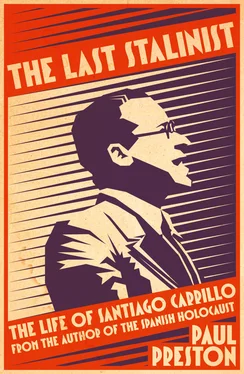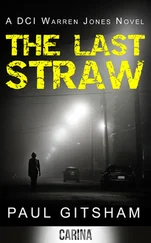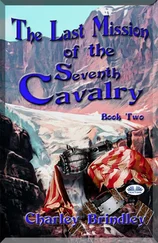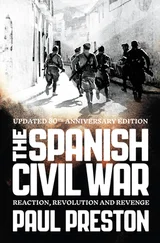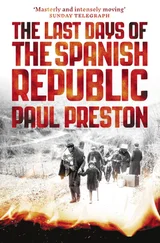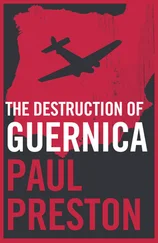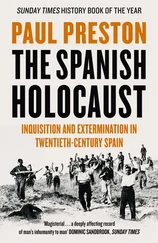I was sure that our arrival in the government would immediately provoke a revolutionary movement … and when I considered that blood which was going to be shed, I asked myself this question: ‘I can give Spain three months of apparent tranquillity if I do not enter the government. If we enter, will the revolution break out? Better let that happen before it is well prepared, before it can defeat us.’ This is what Acción Popular did: precipitated the movement, confronted it and implacably smashed the revolution within the power of the government. 89
In similar terms, Salazar Alonso wrote: ‘The problem was simply to begin a counter-revolutionary offensive to establish a government determined to put an end to the evil.’ It was not just a question of smashing the immediate revolutionary bid but of making sure that the left did not raise its head again. 90
The moment of truth was coming nearer, but the reality would be very different from the Leninist dreams of armed insurrection nurtured by Carrillo and the other young bolshevizers. They had little or no idea of how to convert their threats into action. Largo Caballero and his hardened trade union followers were now using revolutionary phrases less frequently and with decreasing conviction. Their outrage in the wake of the November 1933 elections had given way to alarm at the way in which Salazar Alonso had managed to decimate the organized labour movement during the strikes of the spring and early summer of 1934. Throughout September, there were numerous minor strikes and waves of police activity. On 8 September, in response to a twenty-four-hour strike in Madrid, Salazar Alonso had ordered the Casa del Pueblo to be closed. It was searched, to no avail, by the police. When it was reopened six days later, the police went in again and allegedly found a substantial cache of bombs and firearms. This unlikely discovery was the excuse needed for the Socialist headquarters to be closed again.
The next day, 14 September, there took place an event which symbolized the naive hopes of the bolshevizers. Eighty thousand people attended a spectacular joint rally of the FJS and the Communist Youth at the Madrid Metropolitan Stadium. It was in response to a decree by Salazar Alonso, prohibiting those under the age of twenty-one from joining political organizations without written permission from their parents. Although there were speeches by members of the PSOE and the Communist Party, the main speakers were Carrillo for the FJS and Trifón Medrano for the UJC. All spoke of the imminent seizure of power. Greeted by a sea of raised fists, Carrillo declared that ‘if this government at the service of the right does not withdraw the decree, these youth movements will assault the citadels of power and establish a class dictatorship’. He spoke of the identification of the FJS with ‘the chief of the Spanish revolution’, an obvious reference to Largo Caballero. Intoxicated by the moment, he closed his intervention with cries of ‘Death to the Government! Death to the Bourgeoisie! Long live the Revolution! Long Live the Dictatorship of the Proletariat!’ The event ended with the militants marching out ‘military style’ while waving a profusion of red flags. El Socialista rather ingenuously described the event as ‘a show of strength by the proletariat of Madrid’. 91
The crunch came on 26 September, when the CEDA sparked off the crisis by announcing that it could no longer support a minority government. The only solution was either the calling of new elections or the entry into the government of the CEDA. Lerroux’s new cabinet, announced in the early hours of the morning of 4 October, included three CEDA ministers. The arrival in power of the CEDA had been denominated the first step towards the imposition of fascism in Spain. It was the moment for the much threatened revolutionary insurrection. In the event, the efficacy of the threatened revolution was to be in inverse proportion to the scale of the bolshevizers’ bombast. Much of the Socialist movement was paralysed with doubt. The executives of the PSOE and the UGT met and agreed that, if indeed the President did what they were sure he would not do – invite the CEDA to join the government – then the revolution must be launched. Coded telegrams – with messages like ‘I arrive tomorrow’, ‘Angela is better’, ‘Pepe’s operation went well’ – were sent to local committees in every province.
However, having hoped that threats of revolution would suffice to make Alcalá Zamora call new elections, Largo Caballero simply could not believe that he had failed. The revolutionary committee thus did nothing about making the final preparations for the threatened seizure of power. Instead, they spent the next three days in Prieto’s apartment ‘anxiously awaiting’ news of the composition of the cabinet. Largo still believed that Alcalá Zamora would never hand over power to the CEDA. Similarly, the FJS’s revolutionary militias were also lacking leadership and organization. At 11 p.m. on 3 October, two Socialist journalists, Carlos de Baraibar and José María Aguirre, arrived with the unofficial news that a government had been formed with CEDA participation. Several members of the revolutionary committee declared that the time had come to start the movement. Largo, however, stated flatly that ‘until I see it in the Gaceta , I won’t believe it’. He was finally convinced only by the arrival of some soldiers who brought news that the new cabinet had declared martial law. Even then, it was with reluctance that the Socialists prepared for action. They felt that they had no choice. ‘The die was cast,’ wrote Largo. 92
Now the extent of his revolutionary intentions was revealed when the UGT gave the government twenty-four hours’ notice of a pacific general strike. He hoped that the President would change his mind, but he succeeded merely in giving the police time to arrest working-class leaders. In most parts of Spain, the strike was a failure largely because of the prompt action of the government in declaring martial law and bringing in the army to run essential services.
The entry of the CEDA into the cabinet revealed the emptiness of the revolutionary bombast of the previous months. It was followed by the creation of an independent Catalan Republic, though it lasted only for ten hours; a desultory general strike in Madrid; and the establishment of a workers’ commune in Asturias. With the exception of the Asturian revolt, which held out against the armed forces during two weeks of fierce fighting and owed its ‘success’ to the mountainous terrain and the special skills of the miners, the keynote of the Spanish October was its half-heartedness. There is nothing about the events of that month, even those in Asturias, to suggest that the left had thoroughly prepared a rising. Indeed, the scale of failure was in direct proportion to the scale of the optimistic rhetoric that had preceded it. In fact, throughout the crisis, Socialist leaders were to be found restraining the revolutionary zeal of their followers. 93Accordingly, the new government was able with considerable ease to arrest workers’ leaders and detain suspect members of the police and the army. Without instructions to the contrary, Socialist and anarchist trade unionists in Madrid simply stayed away from work rather than mounting any show of force in the streets. The army took over basic services – conscripts were classified according to their peacetime occupations – and bakeries, right-wing newspapers and public transport were able to function with near normality. Those Socialist leaders who managed to avoid arrest either went into hiding, as did Largo Caballero, or into exile, as did Prieto. Their followers were left standing on street corners awaiting instructions, and within a week the strike had petered out. All the talk of a seizure of power by revolutionary militias came to nothing. Hopes of collaboration by sympathizers in the army did not materialize and the few militants with arms quickly abandoned them. In the capital, some scattered sniper fire and many arrests was the sum total of the revolutionary war unleashed. 94
Читать дальше
